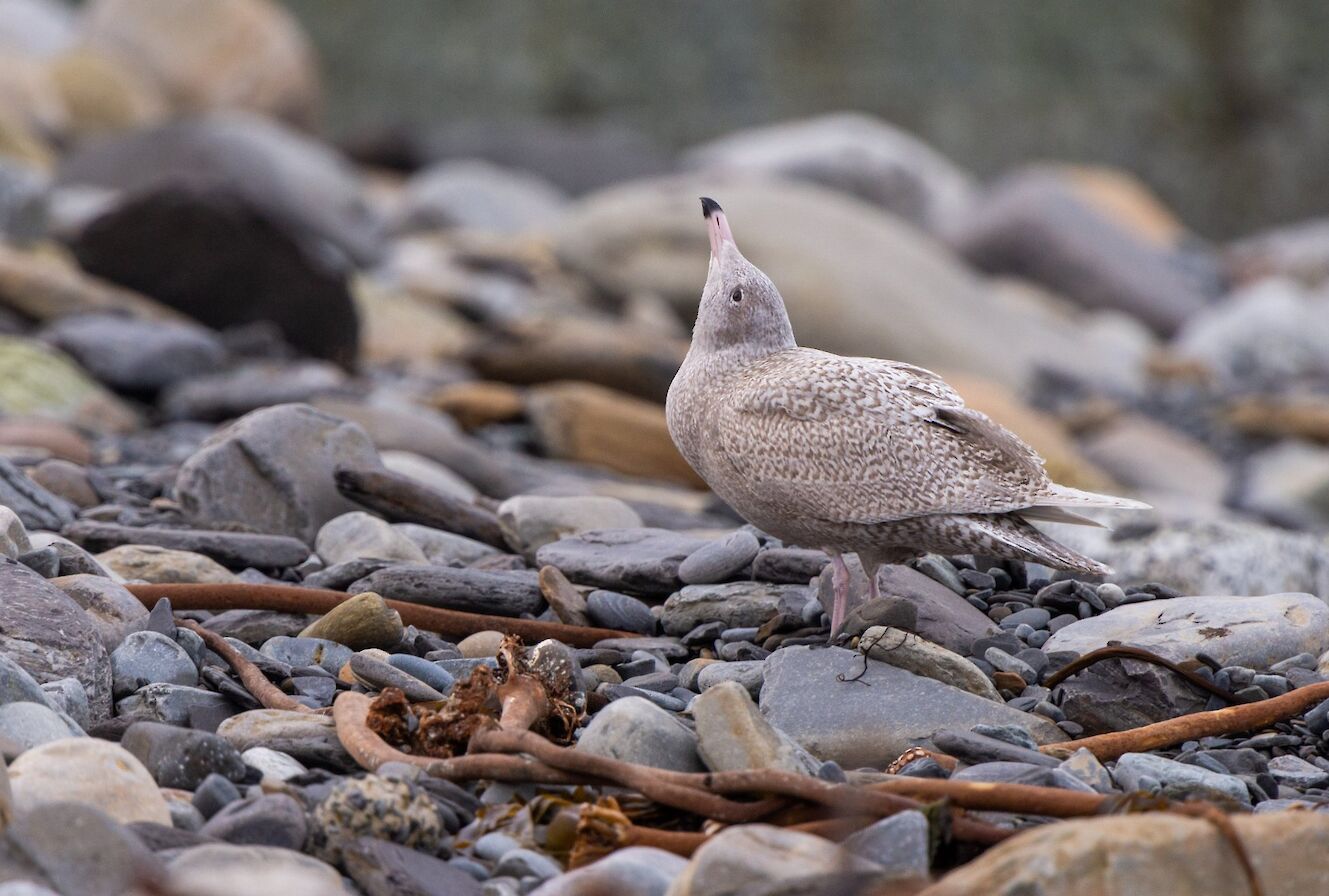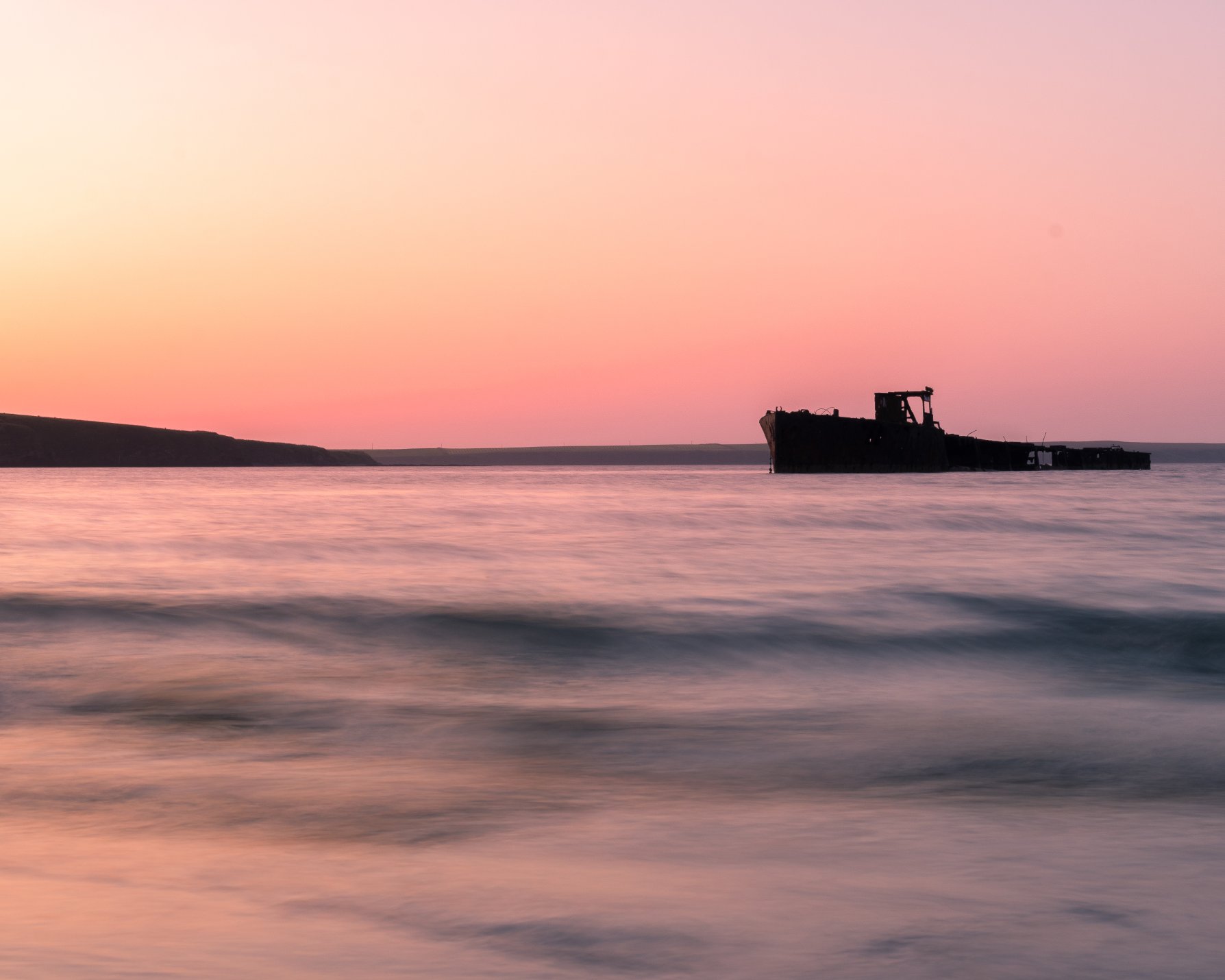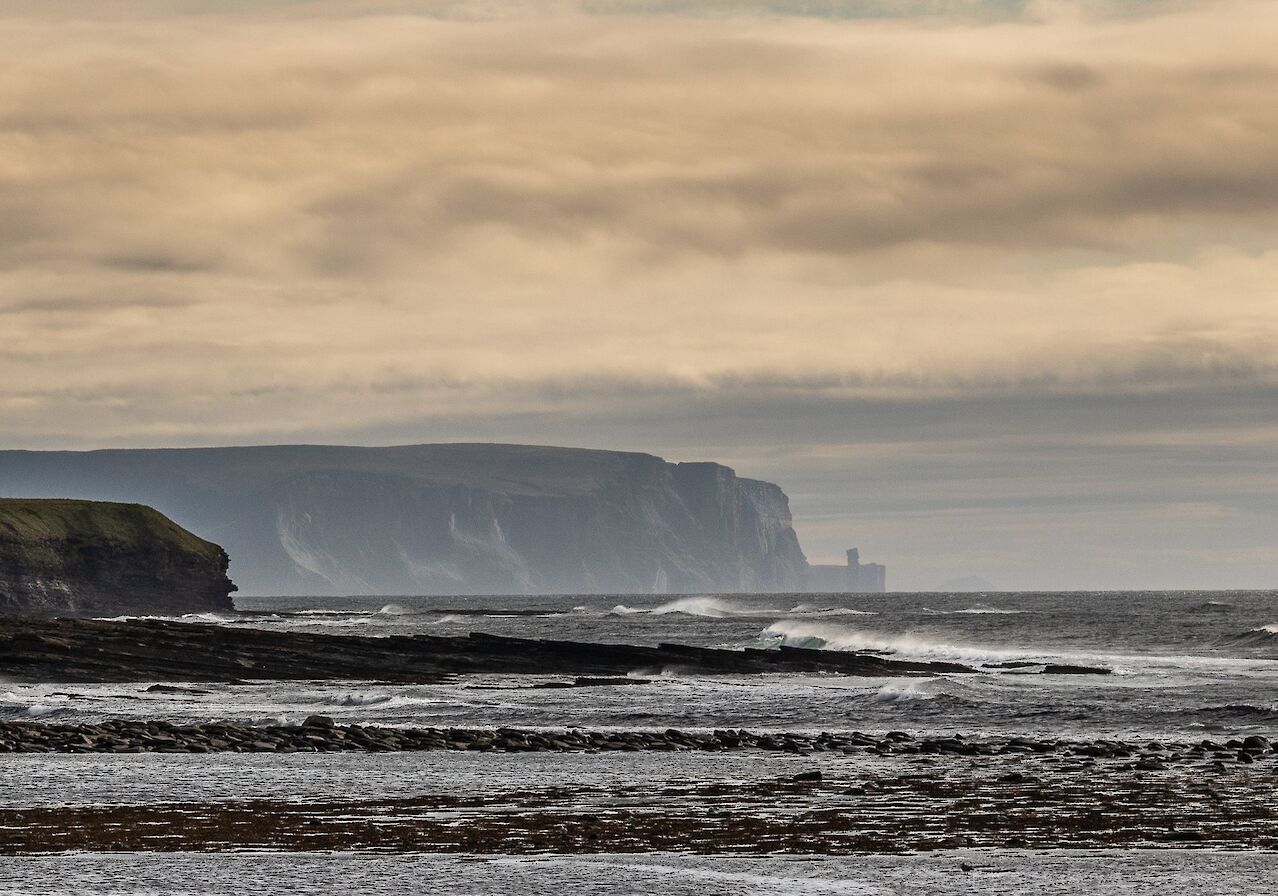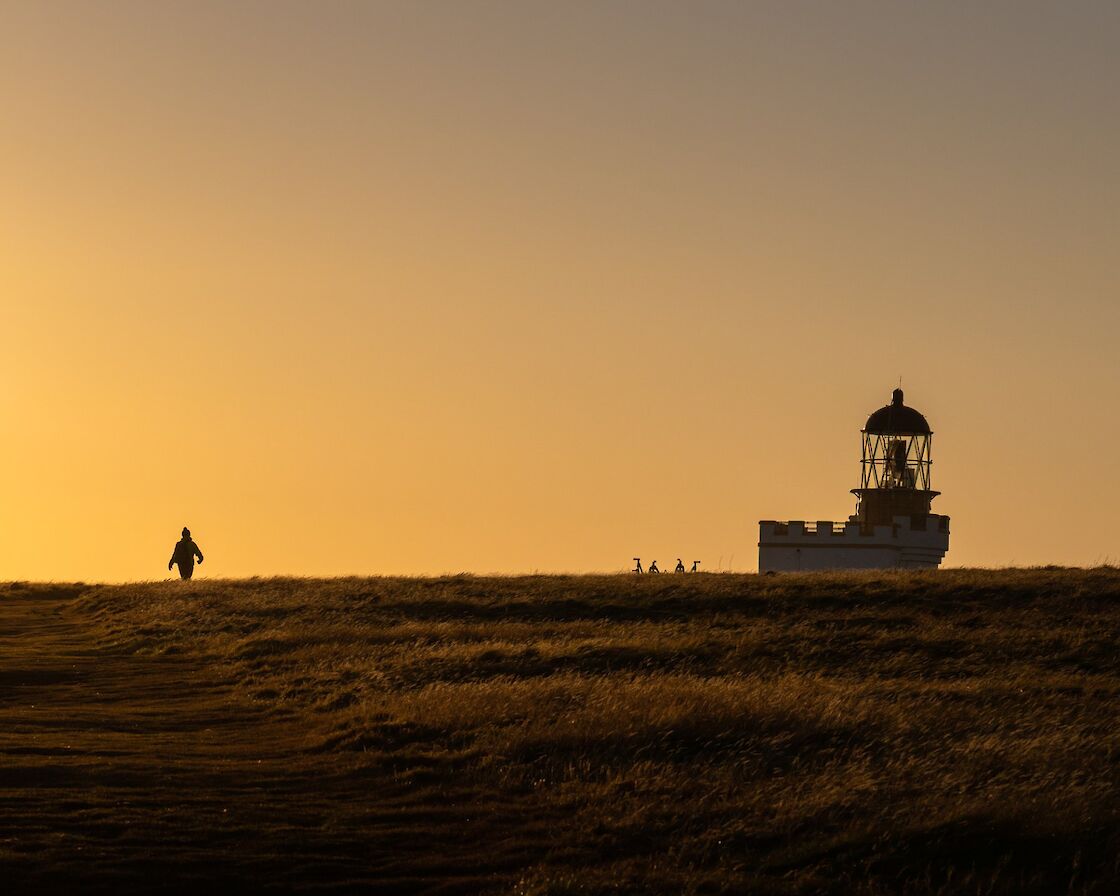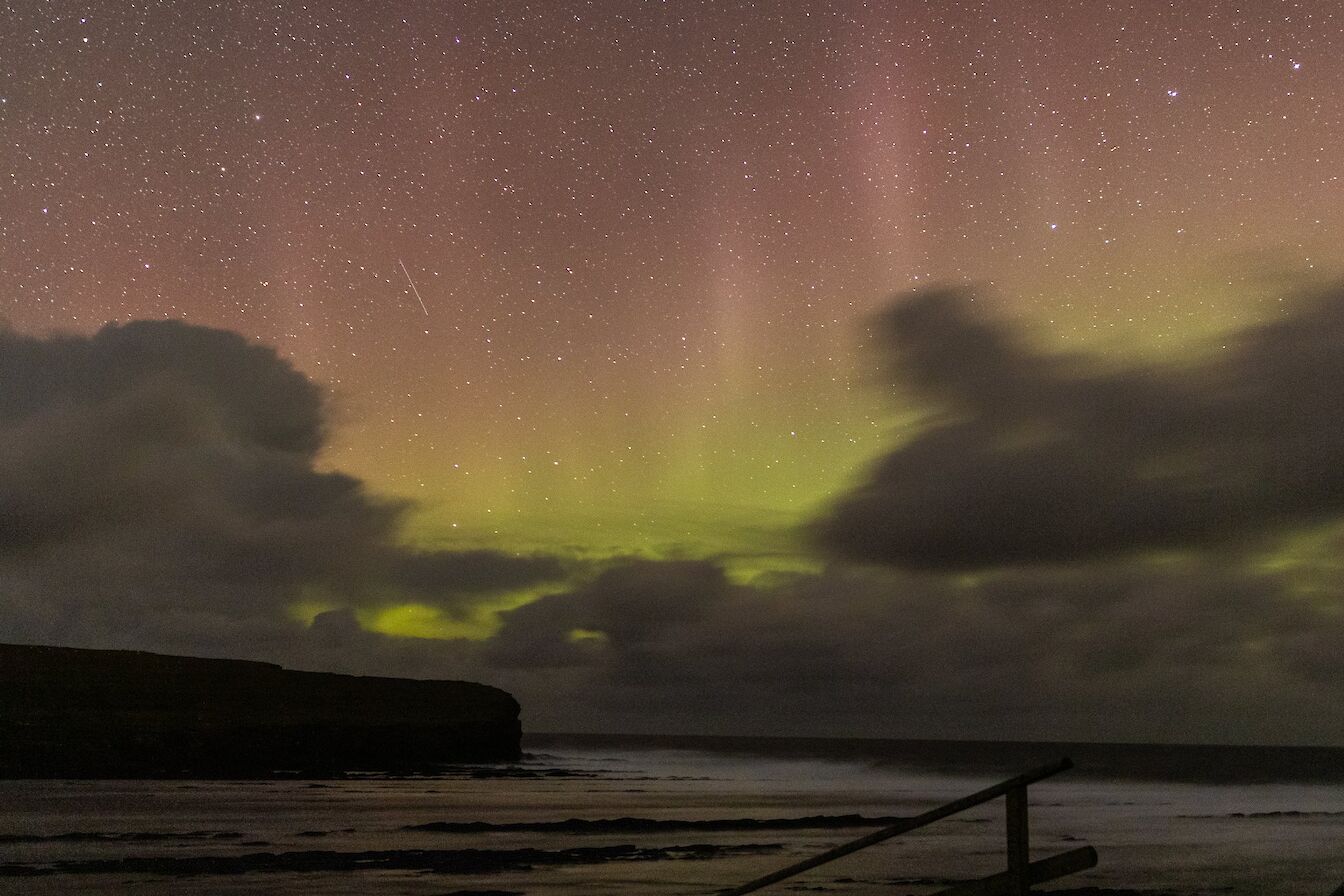Happy New Year and welcome to the first Orkney.com newsletter of 2020!
We hope you’re all feeling refreshed after a fun-filled festive period. Keep reading to find out more about life in Orkney this month, including a round-up of the latest news, events and much more.
As always, we’d love to hear from you too - stay in touch on social media by following the links at the top of the page.
January's headlines

Another amazing archaeological discovery
Archaeologists in Orkney have made another incredible find, uncovering nine Bronze Age carved stones at a site in the West Mainland. Some of the finds look remarkably like carved stone representations of the human form, while others could have potentially been used to tie mooring ropes onto. It's thought the stones are around 4000-years-old and they each measure up to half a metre tall. They’re being hailed as a significant discovery, both in Orkney and within North West Europe.
Orkney businesses heading to Glasgow

17 local producers will be showcasing the finest Orkney food, drink and crafts to the wider world at two trade fair events in Glasgow later this month. Orkney Food & Drink and Creative Orkney members are heading for Scotland’s Speciality Food Show and Scotland’s Trade Fair in the city’s SEC on the 19th of January. The two events run until the 21st and see thousands of buyers from retailers around the UK attend to pick up new products.
Building a new life in North Ronaldsay

Orkney's most northerly community welcomed its newest resident recently. 28-year-old Siân Tarrant has started her role as North Ronaldsay's first Sheep Dyke Warden. She's been tasked with the mammoth undertaking of rebuilding the unique sheep dyke that encircles the island and keeps the ancient breed of seaweed-eating sheep on the shore.
Plan your escape to the islands
 Have you got your copy of the 2020 Orkney Visitor Guide yet? The brochure features all the information you need to be inspired by Orkney this year, including hints and tips on things to see and do, history, heritage and wildlife-watching ideas, accommodation listings and much more. View or order your copy now.
Have you got your copy of the 2020 Orkney Visitor Guide yet? The brochure features all the information you need to be inspired by Orkney this year, including hints and tips on things to see and do, history, heritage and wildlife-watching ideas, accommodation listings and much more. View or order your copy now.
Join us on Instagram
 Follow Visit Orkney on Instagram to see some beautiful images of the islands. We publish shots from around Orkney every week and you can join in too. Tag your own images so we can share your Orkney journey. Use #VisitOrkney and #LoveOrkney to keep in touch.
Follow Visit Orkney on Instagram to see some beautiful images of the islands. We publish shots from around Orkney every week and you can join in too. Tag your own images so we can share your Orkney journey. Use #VisitOrkney and #LoveOrkney to keep in touch.
January in Orkney
We’ll be the first to admit that Orkney sometimes takes January off to catch a breath after a busy festive period, but you can still find plenty of things to see and do if you’re keen to get out and about this month!
You can help keep an eye on Orkney’s bird population with the RSPB’s annual Big Garden Birdwatch this January. It will be held over the weekend of the 25th to 27th and free bird watch packs can be downloaded online. The information gathered helps experts investigate bird numbers and areas of decline around the country.
There are other opportunities to get outside this month too. Our World Heritage Site Rangers will be leading guided tours in the New Year. Join them at the Standing Stones of Stenness every Wednesday (except January 1st) at 10am, and at the Ring of Brodgar every Thursday (except January 2nd) at 1pm. The Heart of Neolithic Orkney marked its 20th anniversary as a World Heritage Site last month – check out our blog to find out more.

You can also get a guided tour of the upper levels of St Magnus Cathedral every Thursday and Saturday this month. Tours are held at 11am and 2pm and booking is essential – phone 01856 874 894 to reserve your spot.
January brings Burns Night celebrations across Scotland, and there will be plenty of events in Orkney too. The Sound Archive has a very special concert to mark the occasion on the 25th. Catch the talented Laeverick on stage from 8pm – tickets can be bought online.

If you want to stay wrapped up warm in January then maybe a trip to the cinema is the perfect thing for you. The Pickaquoy Centre has its normal mix of movies, including Charlie's Angels, Knives Out and Cats this month. See the full schedule online. You can also catch some live showings in the cinema too. The Royal Ballet Live has The Sleeping Beauty on the 16th at 7.15pm, and the Royal Opera Live has La Boheme on the 29th at 7.45pm.
Other indoor options this month include your last chance to see the Christmas Collection of artwork, sculpture and more in the Old Library Exhibition Room in Kirkwall. It closes on the 18th. You can also visit the Highland Park shop on Albert Street in Kirkwall to see a display of work by Sanday-based artist Bill McArthur. This small collection of seascapes is on show until the end of January.
The Orkney Museum’s winter exhibition is 'A Landscape of Tales', showing studies of folklore and archaeology, and runs till the 1st of February.
The Stromness Museum has a very interesting exhibition on display at the moment. ‘Carry on Collecting: New Acquisitions’ features more than 30 objects that have been donated to the museum since its Collections Development Team was launched in 2017. The museum is open 11am to 3.30pm, Monday to Saturday, until the end of March.

That’s just a taste of events in Orkney during January. There’s always lots more happening around the islands – keep up to date with our events page, pick up a copy of local newspaper ‘The Orcadian’ every Thursday or tune into BBC Radio Orkney every weekday morning from 0730 on 93.7FM or on Facebook.
Wild Orkney
January can be a cold month to watch Orkney's natural attractions, but local wildlife cameraman Raymond Besant still has some recommendations for you.
There’s no better place to clear away the cobwebs or clear the head (depending on how your festivities went) than on Orkney’s towering cliffs. Even some of our more lower lying islands have sections of cliffs that will support one of my favourite birds - the fulmar.
It almost goes against the grain visiting these windswept places in winter. Places like Marwick Head in Birsay and Noup Head in Westray are such a throng of life during the summer months, with thousands of guillemots, gannets, razorbills and puffins competing for nest sites, crammed side by side, a cacophony of noise rising from below.
You might overlook the fulmar sweeping along the clifftops in your quest to find a group of puffins, but in January these elegant looking members of the Petrel family (cousins include albatrosses) have the cliffs almost exclusively to themselves. But that’s not to say they are to be found right through the winter - they do come and go, depending in large part on the state of the weather. Look at how the fulmar flies, its subtle grey wings held stiff as it circles. Much like the albatross, it uses these to glide in the updrafts created by the rise and fall of waves. When the wind drops and calm conditions ensue it becomes much harder to maintain this flight mode and the flapping required to stay airborne becomes much less energy efficient.

It’s then that large numbers of fulmars bring the melancholic looking cliffs to life, their cackling calls ringing in the geos. At certain sites like Windwick in South Ronaldsay birds can number in the many hundreds. These are often younger birds yet to reach sexual maturity that are scoping out the cliffs for potential future nest sites. These birds won’t stay all winter and it’s not unusual to go back to the same site the next day once the wind has risen and find them deserted again.
If you’re lucky though you might find some fulmars staying to ride the updrafts. I could watch this all day, the crisp white underbelly and gentle grey wings buffeted by strong winds, tail feathers splayed out as it seems to effortlessly cope with the conditions. Dare I say it, but they actually seem to be doing it because it’s fun. You’ll find small numbers on the west side of Scapa beach, but for more spectacular scenes try Windwick Bay, or the Kame of Hoy.
Other bird species to look out for on winter cliffs are rock pipits, raven, snow bunting and, if you’re really lucky, peregrine falcon.
Gales are common at this time of year and some marine mammals succumb to the difficult conditions, especially young grey seals. Whales too wash up on the shore and whilst worth a look for the pure interest alone, you’re likely to find a winter visitor taking advantage of what to them is a welcome bounty.
Sometimes just called ‘winter gulls’, small but regular numbers of Glaucous and Icelandic gulls visit Orkney during the dark months, brought on northerly winds from Arctic Europe and Greenland. Glaucous gulls are large birds and adult birds in winter plumage are not unlike herring gulls but lack its black wing tips. Indeed the ‘winter gulls’ are also known as ‘white-winged gulls’. Sitting looking through flocks of gulls isn’t everyone’s idea of fun, but there is a certain reward in picking out the visitors from those we collectively lump together as ‘seagulls’.

So, staying downwind from whatever decomposing carcass your dog has come across, if there are gulls nearby then there’s a very good chance one of them is a Glaucous gull. Identification is made all the easier if the bird in question looks pink in colour - this will be a ‘first winter’ bird, yet to reach adulthood. Its mottled plumage is often described as being ‘biscuit’ in colour, with almost a dirty peach hue and a pink base to its bill dipped in ink.
I’ve seen them on grey seal, whale and sheep carcasses. You could almost pick any shore in Orkney but Marwick Bay in Birsay seems to be a favourite haunt for Glaucous gulls. Single birds are most commonly encountered, and four would be considered a very good gull day!
To find the more delicate looking and slender billed Icelandic gull then look through the flock in the Peedie Sea in Kirkwall and the harbour areas of Stromness.
Find out more about Raymond’s work via his official website. You can also find him on Facebook, Twitter and Instagram.
His new book, 'Naturally Orkney Volume 2' is out now, focusing on Orkney's coastline and all the sights and species that can be found there. You can order your copy online.
Focus on photography
Our first featured photographer of the year is Akmal Hakim, who is getting settled into island life after his move north from England.
It was during a trip to New Zealand in 2013 where I picked up my first camera in the form of my reliable Samsung S5 phone. The vast and unique landscape that both the North and South Islands offered made me fall in love with landscape photography. Since then, I’ve always wanted to immerse myself in nature to escape the manic pace of Singapore.
I moved to Newcastle Upon-Tyne in 2014 for University and then to Orkney in January 2019 to start my job as a Naval Architect. I saw this an opportunity to finally be able to do what I’ve always wanted to, and to put things into perspective, Orkney’s mainland has a similar land area to that of Singapore - but the population ratio is about 1:263 inhabitants.
During University I felt that I was perfectly positioned in north-east of England, with Northumberland to the north and the Pennines and the Lake District about an hour or two west of Newcastle. I used that opportunity to shoot various subjects and adapting to the different landscapes which helped to develop my skill as a photographer.
I’ve always used the Canon EOS range and I’m currently using a Canon 750D paired with a Sigma 20mm f1.4 Art lens. I also have a DJI Mavic Pro that was kindly loaned to me by my uncle. The cliffs in Orkney are special places as they allow me to enjoy the sound of the crashing waves, admire the intricate details on the rocks, and appreciate the ocean.
Orkney has its unique set of challenges when it comes to taking photos. With its unpredictable weather and high winds, you’ll sometimes experience clear skies and overcast conditions, cloud and rain within a span of 5 or 10 minutes. Adequate pre-planning and sorting out the right gear is highly recommended, but a spontaneous trip out can sometimes produce dramatic images which makes the effort worthwhile.
See more of Akmal’s images via his Instagram page.
Explore hidden Orkney
Our first Orkney attraction of 2020 is a very special place indeed, one built around 5000-years-ago on a coastline rich with archaeological treasures.
Rousay is an island full of history and heritage. There are literally hundreds of amazing sites to seek out, ranging from ancient Neolithic structures to a Viking drinking hall and an Iron Age broch.
There are also a number of chambered cairns – prehistoric burial sites – dotted around the landscape, and the Taversoe Tuick is one of the most unique examples to be found in the islands.

The cairn sits overlooking Wyre Sound on the south side of Rousay and is thought to date back to around 3000BC. It was first discovered in the late 1800s with excavations taking place in the 1930s. What makes this cairn unique is the fact that it’s a two-storey structures, with a lower and upper chamber. Only the Huntersquoy cairn in Eday features a similar design. The upper section was no afterthought – the cairn was deliberately built in this style.

Originally the cairn had two entrances, one for each chamber, but nowadays a gap in the upper floor lets visitors clamber down to the lower section.
Excavators found a crouched skeleton and other bones in the lower chamber, with the cremated bones of at least one adult and child discovered in the upper part of the cairn. There’s an outer chamber too, which housed three pottery vessels, and is connected to the main cairn by a stone-channel. Theories about its use include the possibility it was built for the living to communicate with the dead.

The Taversoe Tuick is a very special site to visit and offers another glimpse into the lives of our Neolithic ancestors. You’ll never forget the feeling of moving into the subterreanean chamber, before climbing out into the sunlight and the views over the sea, back towards the mainland.

Find out more about the Taversoe Tuick on the Orkneyjar website.
See more of our hidden Orkney attractions via our interactive map.
And finally...
Thank you for taking the time to read our latest newsletter – hopefully there has been something to inspire you to make a visit to Orkney, for a short trip or a more permanent stay.
We’re always keen to hear from you too - share your news, views and comments on the newsletter, Orkney.com and your Orkney experiences with us on Facebook, Twitter, Instagram or E-mail.
In the meantime, it's cheerio from Orkney, for now.
The Digital Orkney project has been part financed by the Scottish Government and the European Community Orkney LEADER 2014-2020

